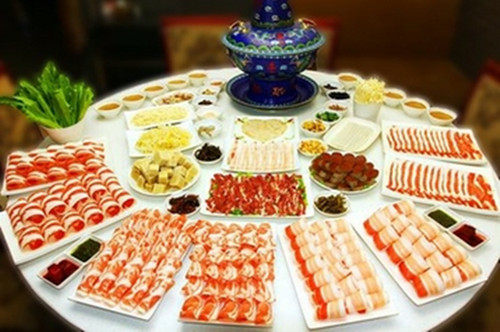By CCTV.com Panview editor team
Editor’s foreword: "Looking China" International Youth Film Project is co-organized by the Academy for International Communication of Chinese Culture (AICCC), Beijing Normal University and Huilin Foundation, which aims to showcase the contrasting simplicity and glamour, the antiquity and fashion of China through unique perspectives of young foreign film makers.
As of the year 2016, 101 students from 25 countries were invited to participate in the project. They were stationed in 13 municipality, provinces and autonomous regions here in China. Every filmmaker has worked out a 10-minute short film about Chinese culture around the topic of “ethnic minority”.

The film, A Sip of Succulence, directed by Michael Fuller, takes a closer look at the latest hot trend in Chinese food. Hot Pot is all the rage in China, from north to south and from east to west Wula Manchu Hot Pot, which originates from the Qing Dynasty in Northeast China, is one of its various flavors.
The Fenjuyuan restaurant, which dates back to Emperor Guangxu over 150 years ago, popularized the meal, with its first chain opening in Changchun, Jilin Province. A variety of reasons explain why the Chinese appreciate Manchu-style cuisine.
Northeast China has very long and cold winters. People need to stay indoors and the Chinese feel more comfortable in sociable group settings. Hence, restaurants become favorite meeting places for families and friends.
The owner of restaurant in Changchun explained that many patrons, who come in large groups, usually stay for 3-4 hours in one sitting. The hot pot allows people to remain eating and drinking for a long period.
The food is delicious as well. The staple is meat and vegetables get boiled in an iron hot pot filled with specially cooked broth. The burning charcoal inside the stove keeps the broth boiling, so you can add rounds of meat and vegetables into it, till you finish your meal with contentment.
The hot pot technique also symbolizes ancient Chinese heritage, which has begun to capture more hearts in China. As the country continues to modernize and urbanize, signs of traditional customs starts to look more appealing.
(The opinions expressed here do not necessarily reflect the opinions of Panview or CCTV.com)

Panview offers a new window of understanding the world as well as China through the views, opinions, and analysis of experts. We also welcome outside submissions, so feel free to send in your own editorials to "globalopinion@vip.cntv.cn" for consideration.















